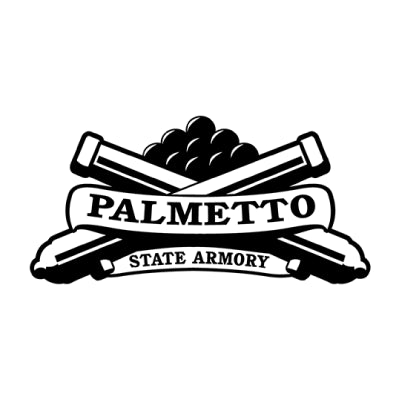
For anyone who owns a firearm, whether for self‑defense, sport shooting, or simply personal protection, there’s a training habit that stands out for its simplicity, effectiveness, and accessibility: dry fire practice.
Dry fire isn’t a replacement for live‑fire training, but it is a foundational tool that every responsible gun owner should integrate into their routine. Making weekly dry fire sessions a non‑negotiable habit can provide benefits that extend beyond the range, enhancing skill, confidence, and safety.
What Is Dry Fire?
Dry fire training is the practice of working with your firearm without live ammunition. In other words, you go through the motions like presentation, sight alignment, trigger press, transitions, and reloads while the gun is unloaded.
According to industry sources, dry fire practice allows shooters to focus on technique and mechanics without the distractions of recoil or the cost of live ammo.
Because it doesn’t involve firing rounds, dry fire can be done almost anywhere you have a safe environment and proper backstop. It’s convenient, low‑cost, and underused.
The Case for Weekly Dry Fire
1. Builds & Maintains Fundamental Skills
Fundamental skills such as grip, stance, sight alignment, trigger control, draw presentation and magazine changes are what separate a casual gun owner from a confident one.
Dry fire provides the opportunity to isolate and refine these fundamentals, without range noise, recoil, or expense. Good manuals and instructors emphasize that structured dry fire helps shooters develop those ingrained patterns more reliably.
By practicing weekly, you keep these skills fresh rather than letting them collect dust between range visits. As one training article notes:
“Short, regular sessions (e.g., 5–15 minutes daily) are more effective than infrequent, lengthy ones.”
A weekly session is a realistic, achievable anchor for many gun owners. It ensures progress isn’t entirely dependent on the range schedule or ammo budget.
2. Promotes Safety & Habitual Discipline
Dry fire training is not just about the mechanics of shooting. It’s also about reinforcing safe firearm handling. Consistent weekly dry fire sessions keep you actively building habit patterns that include: verifying the firearm is unloaded, confirming a safe direction, practicing with complete focus, and mentally resetting for training.
Industry safety guidance emphasizes that dry fire must be done rigorously and intentionally to avoid complacency.
When you make a weekly commitment, you’re less likely to rush or skip these preventive checks, and more likely to treat your firearm with the respect it deserves. That mindset carries over into live fire, carry, and handling scenarios.
3. Cost‑Effective and Convenient
A compelling benefit of dry fire is its cost and convenience. Ammo prices, range travel, costs of targets, and range time all add up. Dry fire allows you to train at home, at odd hours, and for minimal expense. One article states:
“Dry‑fire practice eliminates the need for live ammunition, making it an affordable option for regular practice sessions.”
For a gun owner, being able to practice consistent drills “on your own turf” means you’ll log many more repetitions than you would if you depended solely on the range.
4. Accelerates Skill Improvement and Retention
Skill in shooting is fundamentally about repetition and consistency. Dry fire allows you to build muscle memory in a controlled environment. In simpler terms: when you practice weekly, you reinforce good habits, prevent bad ones, and reduce the “skill fade” that happens when firearms sit idle for weeks or months.
5. Builds Confidence – Both Mechanical and Mental
Confidence doesn’t only come from how fast you can draw or how tight your groups are. It also comes from knowing you’ve put in the work.
Weekly dry fire sessions provide visible progress and incremental wins. They help you feel more comfortable with your firearm, more familiar with your presentation and mechanics, and less anxious about handling or deploying it under pressure.
According to dry fire training literature, concentrating on your fundamentals in dry fire and repeatedly practising them builds not only mechanical proficiency but mental readiness.
What Weekly Dry Fire Sessions Should Look Like
To get the most from your weekly dry fire time, it’s not enough to just “pull the trigger 20 times.” The sessions need structure, focus, and purpose. Here’s a suggested framework:
Warm‑Up & Safety Check (1‑2 minutes)
-
Unload the firearm and clear the chamber. Remove magazines. Consider using a DryFireMag.
-
Confirm no live ammo is present in the room and your backstop is safe.
-
Choose a consistent, distraction‑free space.
-
Define your session goal (e.g., “Focus on trigger reset” or “Smooth presentation from holster”).
Primary Drill (5‑8 minutes)
Select one core skill and repeat it with intention. Examples:
-
Slow trigger press with sight focus.
-
Draw from the holster and first shot on target.
-
Magazine change under timed conditions.
-
Transition between two or more targets.
Repeat with complete focus. Use a timer or coach yourself via video.
Secondary Drill or Flow Sequence (3‑5 minutes)
After core skill work, move into a short sequence combining two or three elements without pause. For example: draw to two shots, then reload, then take one more shot. The goal is to simulate live-fire flow at home, safely and slowly enough to magnify errors.
Cool‑Down and Mental Review (1‑2 minutes)
-
Set the firearm down pointed in a safe direction.
-
Reflect on what worked and what didn’t.
-
Write down one thing to improve next session.
-
End the session with your gun safe‑cleared and secured.
Addressing Common Objections
“Will Dry Firing Damage My Gun?”
This is a common concern, but modern center‑fire handguns are generally safe to dry fire.
The exception: older firearms, specific rim‑fire systems, or guns with unique designs may require snap‑caps or special precautions. Always check your firearm’s manufacturer guidance.
“But It Doesn’t Recreate Recoil or Real Pressure”
True, dry fire won’t replicate recoil impulse, muzzle blast, or split‑second follow‑up mechanics that live fire does. What it does provide is high‑quality repetition of fundamentals, and an opportunity to build the underlying mechanics you’ll rely on when live fire happens. Dry fire is about foundation building; live fire is about validation and stress management.
“I Don’t Have Time Every Week”
Even a 10‑minute session is enough—consistency matters more than duration. Many instructors emphasise shorter, more frequent sessions over infrequent marathon sessions.
If you truly commit to doing some dry fire once per week, and you pre‑plan your drill ahead, you’ll be far ahead of the shooter who only visits the range occasionally.
Why Weekly Matters More Than Occasional
Training hype often focuses on “big range days” or “intense live fire blocks.” But skills fade quickly, and the true difference makers are the consistent habits you build.
Weekly dry fire sessions create training momentum, a cadence that keeps skills alive and growing. Consider:
-
If you wait a month between sessions you may need to relearn much of your draw and presentation, making the next session slower and less productive.
-
If you train weekly, you keep your baseline sharp, reduce 'rust' and make your range sessions vastly more effective.
-
The mental confidence that comes from “I trained this week” cannot be overstated, especially when you carry or depend on your firearm for protection.
In short, weekly dry fire isn’t just good, it’s strategic. It leverages time, safety, and convenience to support your larger training goals.
Integrating Weekly Dry Fire into Your Broader Training Plan
Dry fire should not exist in isolation. For maximum effect integrate your weekly dry fire with monthly live fire and scenario training. Here are pointers:
-
Use dry fire early in the week (home session) and follow up live fire later.
-
After a live fire session identify weaknesses (e.g., reload speed, first‑shot accuracy) and target them in your next dry fire session.
-
Treat dry fire as your “foundation building,” live fire as your “proofing and stress testing,” and scenario/force‑on‑force sessions as your “transfer and decision‑making” block.
-
Keep a simple training log: date, drill, duration, what you focused on, what you noticed. This helps track progress and keeps you accountable.
Make Weekly Dry Fire Your Edge
Every gun owner who truly cares about proficiency, readiness, and safety owes it to themselves to make weekly dry fire a habit. It is low‑cost, high‑return, accessible, safe (when done properly), and foundational.
By prioritising weekly dry fire you will:
-
Maintain your fundamentals rather than letting them erode.
-
Build safe handling habits that become reflexive.
-
Save money and time while still improving.
-
Grow confidence in your shooting mechanics and decision‑making.
-
Arrive at the range with purpose rather than just hoping you remembered.
In the end, the most effective shot is the one you train for. Regular, disciplined dry fire practice means when it counts, you aren’t relying on hope or luck. You’re relying on habit, training, and repetition.
If you haven’t yet committed to it, this week is a perfect time to pencil in a session and get started!








